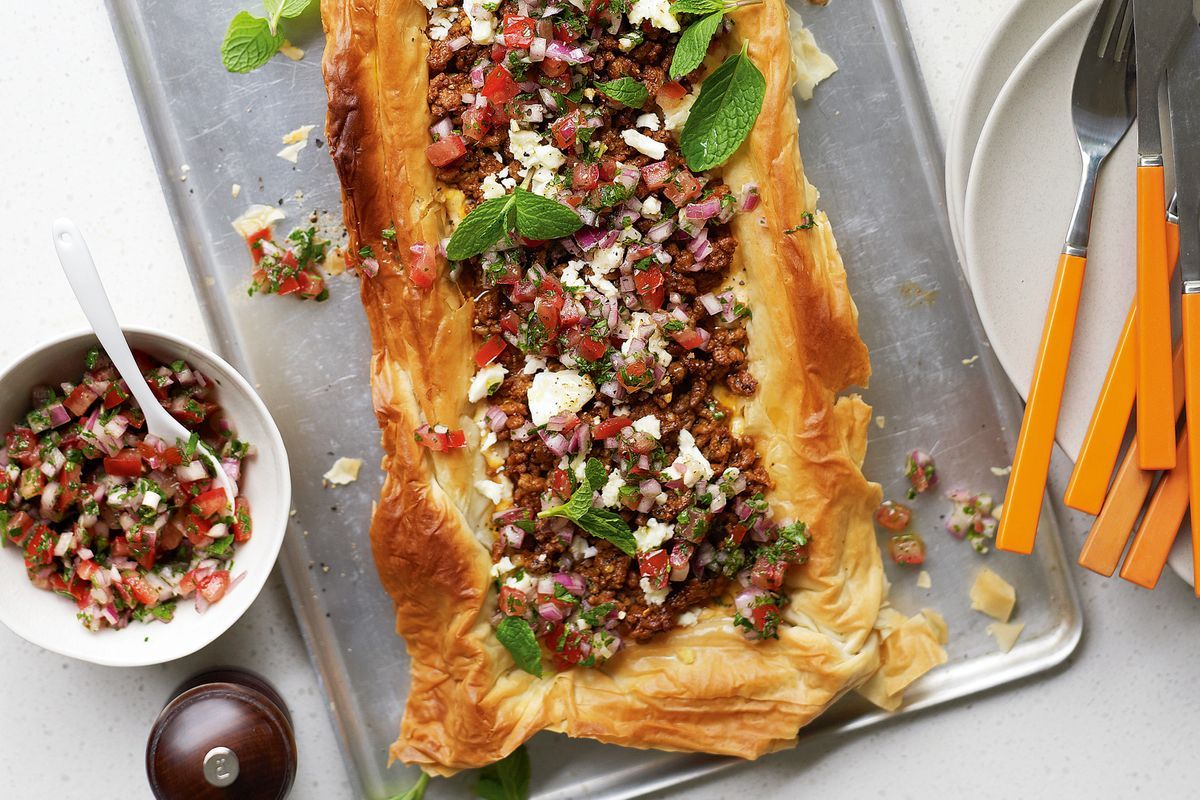Embark on a culinary journey through the sun-drenched lands of the Middle East, where ancient flavors meet modern health consciousness. Discover a vibrant world of paleo-friendly dishes, bursting with the aromatic spices and fresh ingredients that define this rich cuisine. From succulent lamb koftas to fragrant tagines, this exploration reveals how easily traditional Middle Eastern recipes can be adapted to a paleo lifestyle, offering a delicious and nutritious eating experience.
Imagine vibrant colors, tantalizing aromas, and textures that dance on your palate. Picture succulent meats slow-cooked to perfection, alongside an abundance of fresh vegetables and herbs. This isn’t just about following a diet; it’s about embracing a culinary heritage rich in flavor and tradition, reimagined for a modern, healthy approach. We’ll delve into the history of paleo-friendly practices in the region, explore popular recipes, and guide you through creating your own delicious and authentic Middle Eastern paleo feasts.
Introduction to Middle Eastern Paleo Dishes

Middle Eastern cuisine, a vibrant tapestry woven from the threads of diverse cultures and geographies, boasts a surprising compatibility with the principles of the paleo diet. Characterized by its emphasis on fresh, whole ingredients and flavorful spice blends, many traditional dishes naturally align with a focus on lean protein, healthy fats, and an abundance of fruits and vegetables. This harmonious blend of culinary tradition and modern dietary philosophy opens up a world of delicious and nutritious possibilities.
The inherent suitability of Middle Eastern cuisine to paleo principles stems from its historical reliance on readily available, unprocessed foods. For centuries, the region’s inhabitants have thrived on a diet rich in ingredients that align perfectly with the paleo lifestyle. This is not a modern adaptation; rather, it’s a rediscovery of a deeply rooted culinary heritage.
Paleo-Friendly Ingredients in Middle Eastern Cooking
The cornerstone of many Middle Eastern paleo dishes lies in its readily available, naturally paleo-friendly ingredients. Imagine succulent lamb, marinated in a symphony of herbs and spices, roasting slowly over an open fire – a picture of culinary perfection that aligns seamlessly with paleo dietary guidelines. The abundance of fresh vegetables, such as vibrant bell peppers, plump tomatoes, and crisp cucumbers, provides a colorful and nutrient-rich foundation for countless dishes. The fragrant aroma of garlic, onions, and a medley of spices like cumin, coriander, and turmeric fills the air, painting a vivid picture of a healthy and flavorful culinary landscape. Healthy fats are abundant, provided by olive oil, which forms the heart of many sauces and dressings, enriching the dishes with its characteristic fruity flavor and beneficial monounsaturated fats. Nuts like almonds and pistachios, along with seeds such as sesame and flax, add a satisfying crunch and a boost of healthy fats and protein.
Historical Context of Paleo-Friendly Practices in the Middle East
Before the widespread adoption of processed foods and modern agricultural techniques, the Middle East’s diet heavily mirrored paleo principles. For generations, nomadic tribes and settled agricultural communities relied on locally sourced, naturally raised meats, an abundance of fresh fruits and vegetables grown in the region’s diverse climates, and the readily available nuts and seeds. This traditional diet, passed down through generations, laid the foundation for the flavorful and healthful dishes we see today. The use of herbs and spices, not only for their flavor but also for their potential medicinal properties, underscores the deep connection between food, health, and culture in the region. This historical context illuminates the natural synergy between Middle Eastern culinary traditions and the principles of the paleo diet. It’s not a forced adaptation but rather a return to the foundational principles of a time-honored way of eating.
Serving Suggestions and Presentation
Elevating your Middle Eastern paleo dishes from simple meals to culinary masterpieces involves thoughtful plating and the strategic use of garnishes. Presentation isn’t just about aesthetics; it enhances the dining experience, making each bite more visually appealing and ultimately, more enjoyable. The following suggestions will guide you in creating stunning presentations that truly showcase the vibrant flavors and textures of your paleo creations.
Presenting Middle Eastern paleo dishes beautifully involves understanding the inherent elegance of the cuisine. Think clean lines, vibrant colors, and textures that contrast and complement each other. The use of natural elements, like fresh herbs and edible flowers, adds a touch of rustic charm, while strategic use of serving vessels enhances the overall presentation.
Plating and Garnishing Techniques
The key to successful plating lies in mindful arrangement. Consider the shape and color of each element. For instance, a vibrant lamb tagine could be served in a shallow, rustic bowl, with the tender meat nestled amongst a bed of saffron-infused cauliflower rice. A scattering of toasted slivered almonds and a sprinkle of fresh cilantro would add textural contrast and a pop of green. Alternatively, a colorful array of grilled vegetables, such as zucchini, bell peppers, and eggplant, could be arranged artfully on a large platter, creating a visually stunning centerpiece. A drizzle of high-quality olive oil and a sprinkle of za’atar would enhance both the flavor and the visual appeal. Remember, less is often more; a carefully considered arrangement is far more impactful than an overly cluttered plate.
Complementary Paleo Side Dishes
A thoughtfully chosen side dish can elevate the main course and provide a balance of flavors and textures. A simple salad of mixed greens, cucumber, and tomato, dressed with a lemon-tahini vinaigrette, would pair well with almost any Middle Eastern paleo dish. Alternatively, a vibrant quinoa salad, featuring chopped parsley, mint, and toasted pine nuts, adds a hearty and flavorful counterpoint to richer dishes. For a heartier side, consider a roasted root vegetable medley, including sweet potatoes, carrots, and parsnips, seasoned with warming spices like cumin and coriander. The earthy sweetness of the roasted vegetables complements the savory notes of many Middle Eastern paleo dishes.
Beverage Pairings
The right beverage can significantly enhance the dining experience. Refreshing herbal teas, such as mint tea or chamomile tea, offer a light and aromatic complement to lighter dishes. For richer, more savory dishes, a crisp, dry white wine, like Sauvignon Blanc, or a light-bodied red, like Pinot Noir, would be appropriate. Alternatively, unsweetened iced tea or sparkling water with a squeeze of lemon or lime provides a refreshing non-alcoholic option. For a truly authentic touch, consider serving a glass of pomegranate juice, known for its vibrant color and slightly tart flavor, which pairs beautifully with many Middle Eastern dishes.
From the simplest preparations to more elaborate dishes, the journey into Middle Eastern paleo cooking is a rewarding one. The ability to adapt classic recipes while maintaining their authentic character showcases the versatility and deliciousness of paleo eating. By embracing the fresh, vibrant ingredients and traditional cooking techniques of the Middle East, you’ll not only nourish your body but also embark on a culinary adventure that satisfies your senses and leaves you craving more. So, gather your ingredients, embrace the spices, and prepare to create Middle Eastern paleo dishes that will delight your taste buds and leave you feeling energized and satisfied.
Quick FAQs
Can I use substitutes for certain paleo-unfriendly ingredients in traditional recipes?
Absolutely! Many traditional Middle Eastern recipes can be easily adapted. For example, you can substitute cauliflower rice for regular rice, or use almond flour instead of wheat flour.
Are all Middle Eastern spices paleo-friendly?
Yes, most common Middle Eastern spices like cumin, coriander, turmeric, and cinnamon are naturally paleo-friendly.
What are some good paleo-friendly side dishes to accompany Middle Eastern dishes?
Roasted vegetables (like broccoli, peppers, and zucchini), paleo-friendly salads with olive oil and lemon juice, and various types of fermented vegetables are all excellent choices.
Where can I find paleo-friendly Middle Eastern ingredients?
Many mainstream supermarkets now stock paleo-friendly ingredients. You can also find specialized ingredients at health food stores or online retailers.


